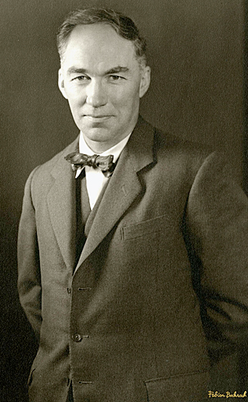Raymond Delacy Adams
American neurologist From Wikipedia, the free encyclopedia
Raymond Delacy Adams (February 13, 1911 – October 18, 2008) [1] was an American neurologist, neuropathologist, Bullard Professor of Neuropathology at Harvard Medical School and chief of neurology at Massachusetts General Hospital.[2] Along with neurologist Maurice Victor, Adams was the author of Adams and Victor's Principles of Neurology, the 12th edition of which appeared, 50 years after the original.[3]
Raymond Delacy Adams | |
|---|---|
 | |
| Born | February 13, 1911 |
| Died | October 18, 2008 (aged 97) |
| Alma mater | University of Oregon |
| Occupation(s) | American Neurologist and Neuropathologist |
Born near Portland, Oregon, Adams was the son of William Henry Adams and Eva Mabel Morriss.[2] He graduated from the University of Oregon with a degree in Psychology. He received his M.D. from the Duke University School of Medicine in 1936.[4] Adams became chief of neurology at Massachusetts General in 1951 retiring in 1977. Adams had an encyclopedic knowledge of adult neurology, pediatric neurology, and neuropathology and is widely regarded as a pre-eminent neurologist of the mid-20th century. He was elected a Fellow of the American Academy of Arts and Sciences in 1955.[5] He helped found the Eunice Kennedy Shriver Center for Mental Retardation.
Writing together with the founder of the neuropathology lab at the Massachusetts General Hospital Charles S. Kubik, Adams wrote clinico-pathological papers, one in 1946 describing occlusion of the basilar artery,[6] and another in 1952 comparing and contrasting the demyelinating diseases including acute and chronic multiple sclerosis.[7] In 1949, together with Joseph Michael Foley he described negative myoclonus[8] and in 1953 they coined the term asterixis.[9] In 1959, Adams and colleagues first described central pontine myelinolysis,[10] a disease stripping the myelin insulation from axons within the brain, but distinct from multiple sclerosis. Together with the Australian neurologist James Waldo Lance he described posthypoxic myoclonus, later called Lance-Adams syndrome.[11] Adams, in collaboration with Canadian neurologist Dr. C. Miller Fisher, made contributions to the field of cerebrovascular disease, the syndrome of "transient global amnesia" in 1964,[12] and in 1965 he published an article in the New England Journal of Medicine describing the syndrome of "normal pressure hydrocephalus".[13] In 1964 he clinically and pathologically distinguished an atypical Parkinsonian syndrome, striato-nigral degeneration,[14] now considered an α-synucleinopathy under the umbrella term multiple system atrophy. His 1965 paper with Drs. M. Victor and M. Cole[15] describing the effects on the brain of liver failure and of porto-systemic shunting of venous intestinal blood around the liver has been cited over 500 times in the medical literature.[16]
Adams died in Boston of complications from congestive heart failure, aged 97.[17]
References
Further reading
Wikiwand - on
Seamless Wikipedia browsing. On steroids.
